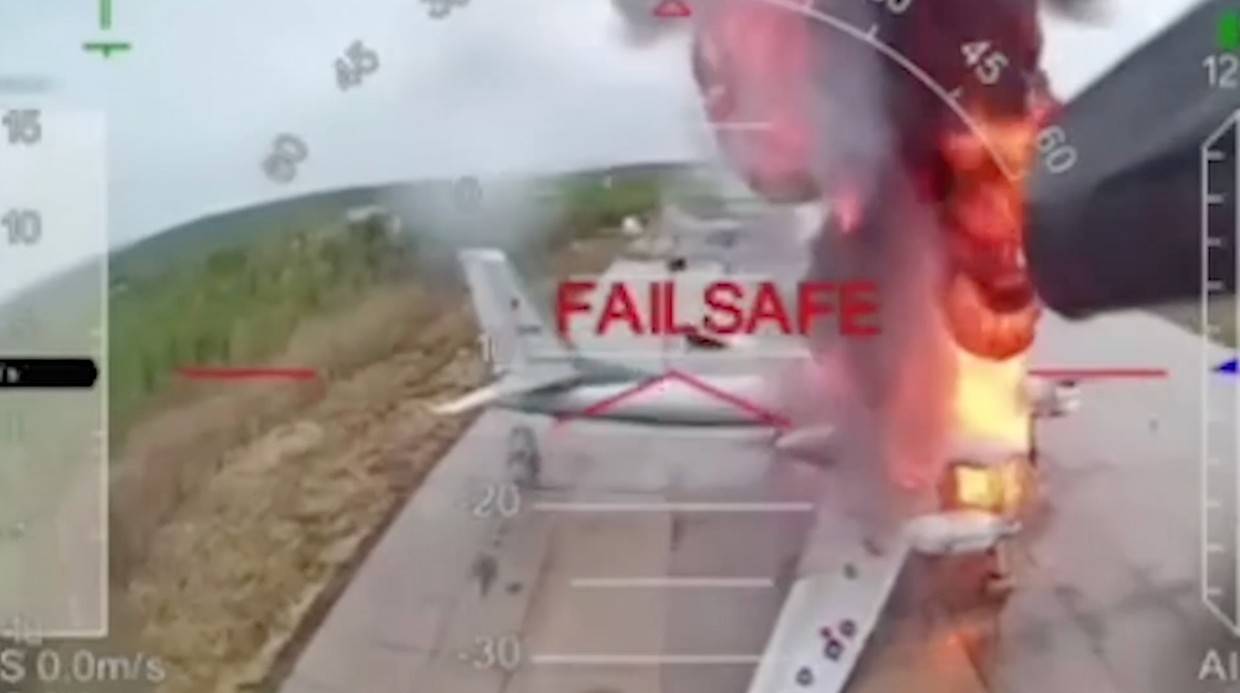June 1st, 2025, marked Russia’s military transport aviation holiday for the Russian armed forces. That same day, Security Services Ukraine (SSU) carried out drone strikes deep inside Russian territory, targeting four strategic airbases and successfully struck 40 nuclear-capable bombers. The operation was codenamed “Spider Web” due to its geographic range across Russian locations; targeted areas were thought to be beyond Ukraine’s reach. The operation signifies the brilliance of asymmetric warfare, imposing high costs via cheap drones. Beneath this tactical triumph lies the risk of nuclear entanglement. The targeting of Russia’s dual-use aerial fleet with conventional force highlights the undermining of Russia’s nuclear deterrent. This significantly blurs the lines between conventional and nuclear force, thus inviting the chance of unprecedented miscalculation.
Planning for the operation started 18 months before the event. Ukrainian SSU operatives smuggled 150 small strike drones, modular launch systems, and 300 explosive payloads into Russia through covert logistical routes. Drones were concealed in the wooden cabins and then loaded into cargo trucks. An important aspect of the operation was the use of Russian civilians and covert logistic routes via Russian territory. SSU recruited Russian truck drivers to deliver mobile drone launchers camouflaged as standard cargo loads. Drivers were instructed to arrive at specific times and given specific locations. At the designated time, the roofs of the cabins were remotely opened, and the drones launched from within the trucks. The positioning of cargo trucks allowed drones to bypass the Russian layered air defense: Pantsir and S-300 units. After launching, the trucks exploded, indicating a self-destructing mechanism. All the SSU operatives were moved back to Ukraine before the drone strikes.
The operation was planned to target 4 strategic airbases that were pivotal to strategic aviation infrastructure and the backbone of Russia’s long-range strike and aerial surveillance. The targeted air bases were Olenya, Diaghilevo, Belaya, and Ivanovo. Olenya airbase is situated 1900 km north of Ukraine and is home to the 40th composite regiment; it stations TU-22M3 bombers and TU-95MS strategic bombers. The Diaghilevo airbase is 470 km away from Ukraine’s border. It stations TU-95, TU-160, and TU-22M3 strategic bombers. Besides these, it is also a hub for combat training of aviation crew and contains an aircraft repair facility. Targeting this base has highly affected the training process and operational capability of the Russian Air Force. The Belaya air base is situated 4000 km from Ukraine, deep inside Siberia. It is home to the 220th Heavy Bomber Regiment, and it stations TU-22M3 bombers capable of launching KH-22 supersonic cruise missiles. The fourth base, Ivanovo Air Base, was stationed with A-50 airborne warning and control systems (AWACs) and is situated 700 km from Ukraine’s border. Any damage to AWAC will significantly affect the situational awareness and command & control capabilities. The targeting of these 4 bases has significantly increased the risk of nuclear entanglement.
Nuclear entanglement occurs when conventional military actions, like Ukraine’s drone strikes on assets that serve both conventional and nuclear roles, ultimately create a risk of escalation to potential nuclear conflict. In Operation Spider Web, Ukraine’s attack on Russian airbases housing dual-use bombers such as the TU-95 and TU-22M3, capable of carrying nuclear warheads, blurs the line between conventional and nuclear domains. This ambiguity is very precarious because it challenges the adversary’s ability to judge the intent thus triggering unwanted responses. The reliance on dual-use technology increases the likelihood of miscalculation. For a nuclear-armed state like Russia, any threat to its strategic arsenal could provoke a disproportionate response beyond the conventional dimension. Russia’s 2024 nuclear doctrine update lowers the nuclear threshold for nuclear use, explicitly allowing a nuclear response to conventional attacks that threaten its nuclear arsenal. Russia’s leadership may interpret such actions as a direct challenge to its nuclear deterrent. Although Ukraine intended to disrupt conventional operations, the dual-use nature of these assets means Russia could perceive the attack as a step toward neutralizing its nuclear capabilities. This Russian posture creates a hair-trigger environment where tactical successes, like Operation Spider’s Web, can be misread as existential threats, thus pushing toward nuclear conflict.
Operation Spiderweb is a daring display of asymmetric warfare, where low-cost drones crippled Russia’s strategic bombers. Yet, its success in targeting dual-use assets like TU-95 and TU-22M3 highlights the dangerous reality of nuclear entanglement. By striking platforms integral to Russia’s nuclear deterrent, Ukraine tests Moscow’s fragile red lines. To navigate this precarious situation, Ukraine and its Western allies must show some restraint while targeting strategic bases. Clear communication channels, including backdoor diplomacy, are essential to clarify intent and prevent Russia from misinterpreting strikes as nuclear provocations. NATO should provide guidelines on targeting dual-use assets ensuring tactical gains do not lead to catastrophic results. Spiderwebs reveal a broader challenge, the need for global norms to govern drone warfare and nuclear entanglement. With the immense success of the operation, state and non-state actors might emulate Ukraine’s playbook, targeting dual-use systems and destabilizing strategic stability. The international community must delineate conventional and nuclear boundaries in hybrid conflicts.

Table of Contents
ToggleZohaib Arif
Zohaib Arif is an undergraduate student of Strategic Studies at the National Defence University, Islamabad. His academic interests include Nuclear Strategy, Drone Warfare, and Geopolitics.













